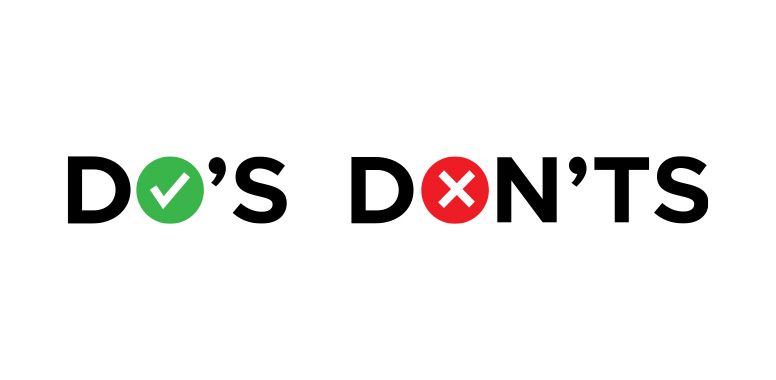Don’t Let IP Violations Sink Your Amazon Business—Here’s How to Fight Back
Imagine this: You’ve worked hard to build your brand on Amazon, fine-tuned your listings, and secured a steady stream of sales. Then, out of nowhere—you receive an IP violation notice. Your listing gets taken down, your account health plummets, and suddenly, your business is at risk.
Sound familiar? You’re not alone. With millions of sellers vying for attention, intellectual property (IP) violations—whether from counterfeiters, unauthorized sellers, or mistaken claims—are a constant battle. Left unchecked, they can lead to listing removals, account suspensions, or even legal trouble.
But here’s the good news: You can take control. Understanding how Amazon handles IP violations, knowing how to respond effectively, and taking proactive steps to protect your brand can save you time, money, and stress.
In this guide, we’ll break down the types of IP violations, how to resolve them, and most importantly—how to prevent them from happening in the first place. Let’s dive in!
Understanding Amazon IP Violations
An IP violation occurs when someone unlawfully uses protected intellectual property to sell products on Amazon. Intellectual property rights include trademarks, copyrights, and patents. Amazon categorizes policy violations into different types, which are visible in the Account Health Dashboard. These include:
- Suspected IP violations
- Received IP violations
- Product authenticity complaints
- Product condition complaints
- Food and product safety issues
- Listing policy violations
- Restricted product policy violations
- Customer product reviews policy violations
Here’s a closer look at the most common types of IP violations on Amazon:
1. Trademark Infringement
Trademarks protect brand names, logos, and slogans. If another seller uses your registered brand name, logo, or a confusingly similar mark, they are committing trademark infringement. This misleads customers and can dilute your brand’s value.
2. Copyright Infringement
Copyrights cover original content, including product descriptions, images, and branding materials. If another seller copies your copyrighted product listings or marketing content without permission, it constitutes copyright infringement.
3. Patent Infringement
Patents protect unique product designs and inventions. If another seller produces or sells a product that mimics your patented design, it’s a patent violation.
4. Counterfeiting
Counterfeiting is one of the most serious IP violations on Amazon. It involves unauthorized sellers replicating genuine products with the intent to deceive customers. Counterfeit products not only hurt sales but can also damage your brand’s reputation.
Why Are Amazon IP Violations a Serious Concern?
Amazon has strict policies to protect intellectual property rights. If you ignore IP violations, you risk:
- Loss of sales due to counterfeit or infringing products.
- Customer confusion, leading to negative reviews and decreased trust.
- Legal consequences, including lawsuits from rights holders.
- Amazon account suspension, which can disrupt your business.
Amazon takes action against sellers who accumulate multiple IP violations. Even a single complaint can temporarily suspend an ASIN, and repeated violations could lead to permanent bans.
Steps to Take If You Receive an Amazon IP Violation
If you receive an IP violation on Amazon, follow these steps to address it effectively:
Step 1: Identify and Document the Violation
- Check your Account Health Dashboard to see the details of the complaint.
- Take screenshots of the alleged infringing listing.
- Gather invoices, authorization letters, and any supporting documentation that proves your right to sell the product.
Step 2: Research the Complainant
- Verify whether the complaint is valid by checking the intellectual property ownership.
- If the complainant is a competitor making a false claim, document evidence to dispute it.
- If you receive a buyer message claiming to be from a brand owner, mark it as "No Response Needed" or report it to Amazon.
Step 3: Implement Corrective Measures
- If the claim is valid, take corrective actions such as removing the infringing content or obtaining the proper rights to sell the product.
- If necessary, modify your product listings to ensure compliance.
Step 4: Review Amazon’s Policies
- Familiarize yourself with Amazon’s IP policies to understand how violations are handled.
- Ensure that your listings comply with all guidelines to prevent future issues.
Step 5: Negotiate with the Complainant
- If the complainant is a brand owner, reach out professionally to resolve the issue.
- Offer to make necessary changes to your listing to avoid further conflicts.
- Sometimes, complainants may agree to withdraw their complaint after discussions.
Step 6: Submit a Plan of Action (POA) to Amazon
- If your listing or account is suspended, submit a Plan of Action (POA) outlining:
- The root cause of the violation.
- The corrective measures you have taken.
- Your plan to prevent future violations.
- Ensure your POA is clear, concise, and professional.
Step 7: Seek Expert Assistance
- If the issue is complex, consult an Amazon IP expert or a legal professional specializing in e-commerce.
- Experts can help craft compelling appeals and guide you through reinstatement procedures.
Step 8: Monitor Your Account Regularly
- Keep an eye on your Account Health Dashboard to detect any new violations.
- Implement proactive measures such as brand protection programs to safeguard against future infringements.
How Long Do IP Complaints Stay on Amazon?
IP complaints can remain on record for six months or longer, depending on the severity. While Amazon does not provide an exact timeframe, unresolved violations can impact your account health indefinitely.
To minimize the impact, focus on resolving complaints swiftly and maintaining compliance.
Preventing IP Complaints on Amazon
Avoiding IP complaints is key to maintaining a healthy Amazon account. Here are some best practices:
1. Conduct Thorough Product Research
- Before listing a product, verify that it doesn’t infringe on existing trademarks, copyrights, or patents.
- Use tools like the USPTO (United States Patent and Trademark Office) database to check trademark registrations.
2. Source Products from Authorized Suppliers
- Purchase inventory from reputable suppliers with clear proof of authenticity.
- Avoid third-party wholesalers that lack verifiable authorization from brand owners.
3. Verify Product Authenticity
- Request certificates of authenticity, invoices, and licensing agreements from suppliers.
- Ensure all documentation is legitimate and matches the product details in your listings.
4. Keep Critical Documentation on Hand
- Letters of Authorization from brand owners can protect you against false IP claims.
- Invoices serve as proof of purchase and are crucial in dispute resolution.
5. Enroll in Amazon Brand Registry
- If you own a brand, register it with Amazon Brand Registry to gain additional protections, including:
- Access to Amazon’s Transparency Program to prevent counterfeiting.
- The ability to report infringing sellers quickly.
- Enhanced brand control over listings.
6. Monitor Your Listings Proactively
- Use brand monitoring tools like Amazon’s IP Accelerator to detect and remove unauthorized listings.
- Set up alerts for trademark violations and take immediate action against infringers.
7. Educate Your Team on Amazon Policies
- Ensure that all team members handling listings and inventory understand Amazon’s IP guidelines.
- Regular training can help prevent unintentional violations.
Final Thoughts
Protecting your Amazon business from IP violations isn’t just about reacting—it’s about staying proactive, informed, and prepared. By following the strategies in this guide—understanding IP policies, responding swiftly to claims, and taking steps to safeguard your brand—you can minimize risks and keep your business running smoothly.
Amazon’s landscape is always evolving, and so are the challenges sellers face. Stay ahead by monitoring your listings, enforcing your brand rights, and staying compliant with Amazon’s policies.
Don’t let IP issues derail your success. Need expert guidance to navigate IP claims and protect your brand? Reach out today or book a Zoom
call
here
to learn how we can help you stay compliant, competitive, and in control. Your success on Amazon starts with the right strategy—let’s build it together with
CMO!


